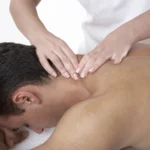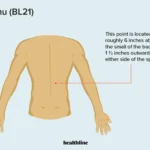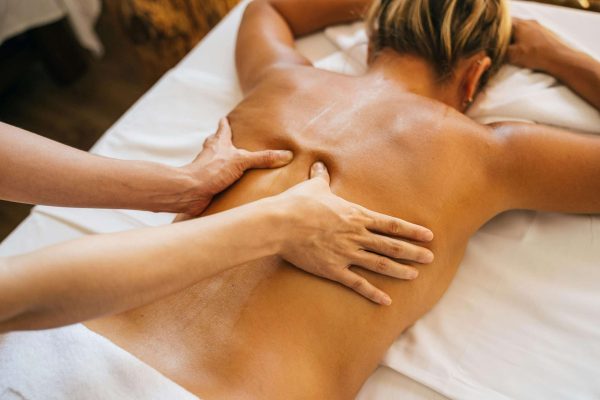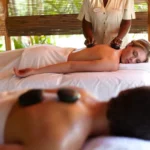Arm tension is one of the most common complaints for people who type all day, lift weights, work with their hands, or carry stress in their upper body. Whether it’s tight forearms, sore biceps, aching wrists, or general muscle fatigue, an arm massage can provide fast relief and help prevent future discomfort.
This guide walks you through how to massage your arms properly, why it works, and the best techniques to ease pain, improve circulation, and relax your entire upper body. With just a few minutes of practice, you can turn arm massage into a soothing self-care ritual ✨.
Table of Contents
Why Arm Massage Works
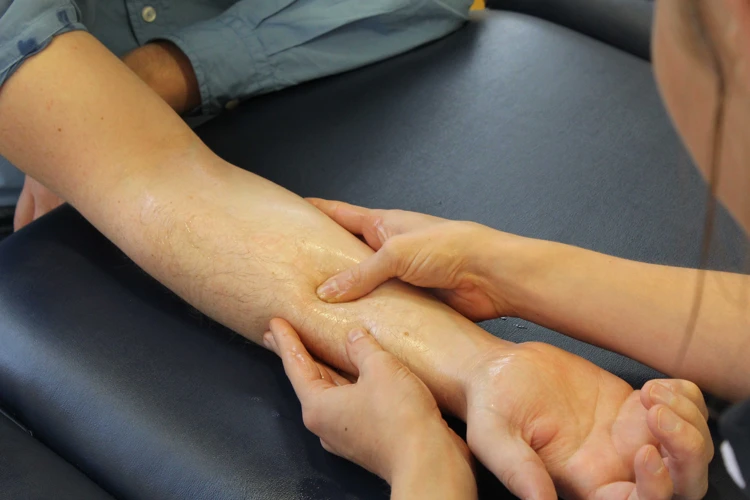
Your arms contain dozens of muscles responsible for gripping, lifting, typing, stabilizing your shoulders, and supporting wrist movement. These muscles can easily become tense or overworked—especially the forearm flexors and extensors, which tighten from repetitive tasks like computer work.
Arm massage helps by:
- Improving circulation
- Softening tight muscle fibers
- Reducing inflammation
- Calming irritated nerves
- Increasing joint mobility
When blood flow improves, muscles receive more oxygen and nutrients, helping them recover and reducing the heavy, fatigued feeling in the arms.
Regular self arm massage can also prevent tightness from returning, making it one of the easiest ways to support everyday arm health.
Benefits of Arm Massage
Reduces Muscle Tension & Soreness
Massage breaks up knots and adhesions caused by repetitive motion, exercise, posture, or stress. Many people use massage for sore arms after weight training or long days at the computer to restore comfort quickly.
Improves Circulation
Gentle rhythmic strokes increase blood and lymph flow, reducing swelling and helping muscles recover faster. Improved circulation also enhances skin tone and tissue health.
Eases Wrist, Forearm & Elbow Discomfort
Tight forearm muscles often contribute to wrist pain or strain around the elbow. Targeted massage helps reduce the pressure around these joints and supports better mobility.
Boosts Relaxation & Lowers Stress
Slow, mindful massage stimulates the parasympathetic nervous system — your body’s natural “rest and digest” mode — helping dial down stress and encourage emotional relaxation 💛.
Improves Flexibility & Range of Motion
Releasing tight muscle fibers helps your arms move more freely, making work and daily tasks feel easier.
Supports Post-Workout Recovery
Massage can reduce delayed onset muscle soreness (DOMS) and support faster recovery between training sessions.

What Causes Arm Tension & Soreness? 🤔
Arm tension can build up from many everyday habits, including:
- Repetitive movements (typing, gripping, texting)
- Working long hours at a computer
- Poor posture
- Overuse during sports or strength training
- Carrying children or heavy bags
- Tendon irritation
- Stress-related muscle guarding
- Dehydration or lack of stretching
If your symptoms last more than a few days, worsen, or include numbness, speak with a healthcare provider.
How to Massage Your Arm (Step-by-Step Guide) ✋
If your arms feel tight or overworked, this simple routine can help restore comfort quickly. It’s easy enough to do at home, at your desk, or during recovery after workouts 💪.
Step 1: Warm-Up
Rub your hands together and apply a small amount of oil or lotion. Warm tissue relaxes more easily.
Step 2: Effleurage (Long Strokes)
Use long, sweeping strokes from your wrist toward your shoulder. This stimulates circulation and prepares the muscle layers for deeper work.
Step 3: Kneading
Use your fingers and thumb to “pick up and squeeze” the muscles along your forearm, bicep, and tricep. This helps soften tight fibers.
Step 4: Circular Friction
Make slow circles over areas that feel dense or tender, especially around the elbow.
Step 5: Compression
Press into tight spots, hold for a few seconds, and release. This is helpful for deep fatigue in the biceps and triceps.
Step 6: Wrist & Hand Release
Since forearm muscles connect into the hand, this step is essential:
- Press your thumb into the palm
- Massage the base of the thumb
- Stretch your wrist gently
Detailed guide:
👉 How to Give a Good Hand Massage
Step 7: Gentle Stretching
End with slow arm, wrist, and finger stretches to restore mobility.
Arm Massage Techniques Explained 🎯
Here is a modern, arm-specific breakdown written to feel human, intuitive, and highly practical.
Deep, Slow Pressure for Overworked Arm Muscles
Arm muscles respond best to slow, intentional pressure. Move your thumb or forearm along the muscle’s length and pause when the tissue feels dense. Instead of increasing force, hold steady — the muscle will “melt” as it releases. This technique is perfect after lifting, carrying, or upper-body strength training.
Targeting Forearm Knots From Repetitive Use
Daily typing and gripping load the same small forearm muscles. To release these knots, angle your thumb slightly across the muscle fibers, press gently until you feel resistance, and wait until the sensation softens. This often restores wrist mobility almost instantly ✨.
Short, Side-to-Side Friction for Tendon Tightness
When the elbow tendons feel sharp or irritated, use side-to-side strokes rather than sliding along the arm. This increases circulation to areas that don’t naturally receive much blood flow — helpful for early tennis elbow or gripping fatigue.
Massage Combined With Slow Movement
Arms respond beautifully to movement-assisted massage. As you knead the forearm, slowly rotate your wrist or extend your fingers. This encourages deeper muscle layers to release and improves tissue glide.
Heat to Soften Tension
Apply heat until the muscle feels pliable — like softening butter before spreading it. Once warm, deeper techniques become far more effective and comfortable.
Cooling for Irritated Spots
If you feel sharpness or irritation (especially around the elbow), cool that specific spot for 20–40 seconds. Move the cool surface in slow circles, then massage gently around, not directly on, the irritated area.

Arm Massage for Specific Issues 🩹
Computer & Desk-Job Tension
Typing tightens the forearm flexors and strains the wrist and elbow. Massage helps, but combining it with ergonomic adjustments — like raising your monitor or adjusting your chair height — offers long-term relief.
Post-Workout Soreness
Massage helps reduce that heavy, stiff “post-pump” feeling and speeds recovery between training sessions.
Tennis or Golfer’s Elbow
Massage the surrounding muscles gently but avoid pressing directly on irritated tendons.
Poor Circulation
Light, rhythmic strokes help relieve swelling and arm heaviness by boosting blood and lymph flow.
Tools You Can Use for Arm Massage 🛠️
Massage Gun
Great for biceps, triceps, and forearms. Use low intensity and avoid bony edges.
👉 How To Use A Massage Gun
Massage Cups
Useful for improving circulation and releasing deeper tension.
👉 How To Use Massage Cups
Therapy Balls
Roll along the wall for slow, controlled pressure.
Warm Oils
Jojoba, grapeseed, and sweet almond provide smooth glide and hydrate the skin.
Safety Considerations ⚠️
- Stop immediately if you feel sharp or radiating pain.
- Avoid massaging swollen, bruised, or inflamed areas.
- Seek medical advice for nerve or vascular conditions.
- Pregnant individuals should avoid certain pressure points.
If symptoms persist or worsen, consult a healthcare provider.
Frequently Asked Questions 💬
How often should I massage my arm?
Most people benefit from arm massage 2–4 times per week, especially if they type or lift often. If your arms feel tight daily, short 3–5 minute sessions can help maintain flexibility and prevent tension from building up. Consistency matters more than intensity — gentle, regular massage supports healthier muscles and better circulation over time.
How long should an arm massage session last?
A self-massage can be as short as 5 minutes or as long as 15–20 minutes if you’re working on stubborn areas. Longer sessions can feel great, but overworking a tight muscle may increase soreness. Aim for slow, steady pressure and stop when the tissue feels warm, softer, and more mobile. Your body will guide the length naturally.
What type of oil or lotion should I use?
Light, non-greasy oils like jojoba, grapeseed, or sweet almond offer smooth glide and hydrate the skin without feeling heavy. If you prefer something quick-absorbing, choose a fragrance-free lotion. Always patch-test new products if you have sensitive skin, and avoid heavily perfumed formulas if you’re prone to irritation.
Is arm massage safe if I have an injury?
It depends on the type of injury. Avoid massaging areas that are swollen, bruised, hot to the touch, or producing sharp pain. For chronic tightness or mild overuse, gentle techniques may help — but always follow your clinician’s recommendation. If you’re unsure whether massage is appropriate, a brief check-in with a physiotherapist can provide clarity.
Can arm massage help circulation?
Yes — rhythmic strokes help stimulate blood flow and lymph drainage, which can ease swelling, improve warmth, and reduce the “heavy” feeling in tired arms. If you have a diagnosed circulation condition, speak with a healthcare professional first. For most people, even a few minutes of gentle massage can noticeably improve comfort and mobility.
Is it normal to feel sore after an arm massage?
Mild soreness is normal, especially if the muscles were tight or you haven’t massaged them before. This should settle within 24–48 hours. If the soreness feels sharp, inflamed, or worsens the next day, lighten your pressure next time or shorten the session. Your massage should feel productive and relieving — not painful.
Can arm massage help with numbness or tingling?
If numbness is caused by muscle tension or tight forearms compressing nearby nerves, gentle massage may provide temporary relief. However, persistent numbness or tingling can indicate nerve compression or another underlying issue. Avoid deep pressure and consult a healthcare professional if symptoms continue or worsen.
What’s the best technique for tight forearms?
A combination of kneading, slow friction circles, and stretching tends to work best. The forearms respond especially well to cross-fiber movement and slow pressure that runs across the muscle instead of along it. Adding wrist rotations or finger extensions while massaging can help deeper layers release more effectively ✨.
Should I use heat or ice before massaging my arm?
Use heat if your muscles feel stiff, tight, or “locked up” — it softens the tissue and prepares it for deeper work. Ice is better for irritated or inflamed spots, especially around the elbow. A good rule: heat for tight muscles, ice for irritated tendons. Choose what feels best for your symptoms.
Can arm massage help with stress relief?
Absolutely. Slow, intentional massage activates the parasympathetic nervous system — your body’s “rest and restore” mode — which helps reduce tension, calm the mind, and ease stress-related tightness. Many people find that even a 5-minute arm massage helps them feel grounded and more connected to their body 💛.

Final Thoughts ✨
Arm massage is one of the simplest, most effective ways to ease tension, improve circulation, and boost everyday comfort. Whether you’re dealing with sore arms, tight forearms, or general muscle fatigue, adding self arm massage into your weekly routine helps keep your upper body flexible, relaxed, and resilient.
Your arms work hard for you every single day — give them the kindness they deserve 💛.
📚References
- Hsieh, Y. L., Kuo, Y. H., & Chen, C. F. (2013). Massage therapy for carpal tunnel syndrome: a systematic review and meta-analysis. Evidence-based complementary and alternative medicine : eCAM, 2013, 839348.
- Hülse, M., & Blome, C. (2019). Massage Therapy for the Treatment of Arm Pain. International Journal of Molecular Sciences, 20(3), 621.
- Harvard Health Publishing. (2013). Massage: Get in touch with its many benefits. Harvard Health Blog
⚠️ Disclaimer:
This article is for informational purposes only and does not constitute medical advice. Always consult with a licensed healthcare provider or certified massage therapist before beginning any new treatment, especially if you have pre-existing health conditions or concerns.


